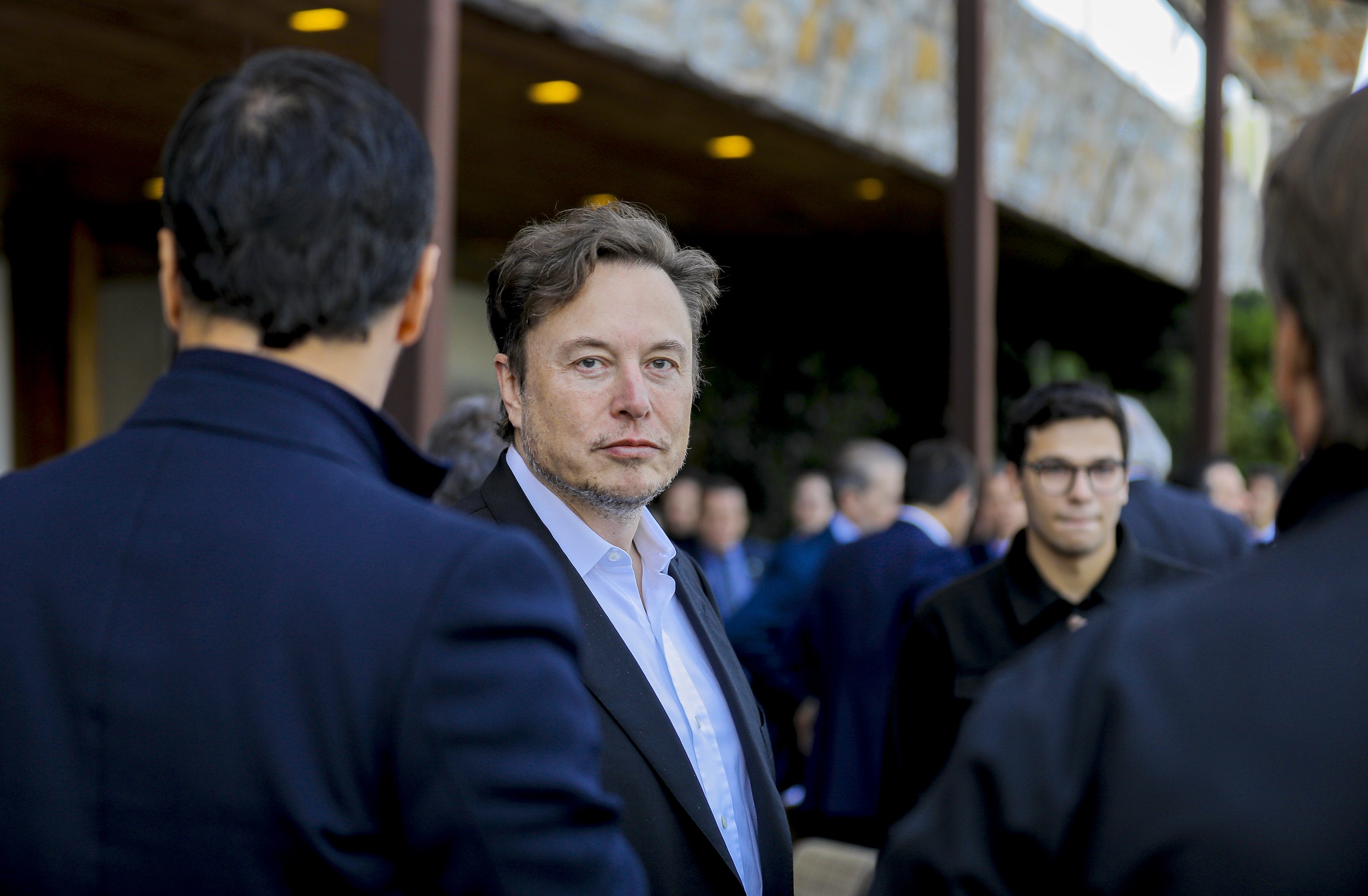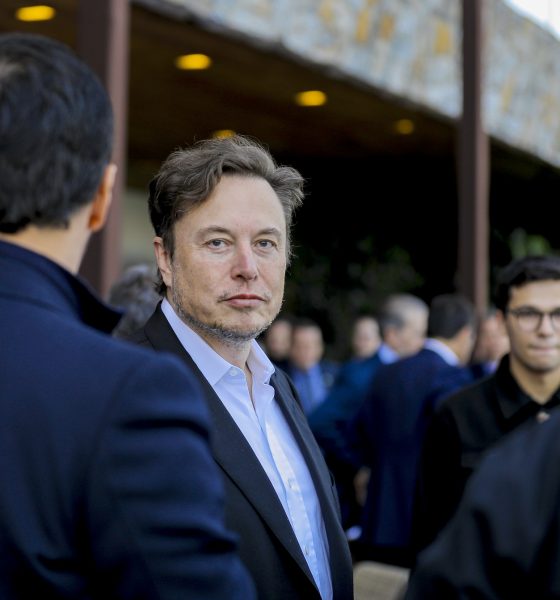

News
Elon Musk shares insights on jet tracker ban, Twitter’s privacy info policy updates
Twitter officially banned the account of jet tracker Jack Sweeney on Wednesday, together with his other accounts that track notable people such as Elon Musk. Sweeney’s ban has been linked to an incident involving Elon Musk’s Baby X, his youngest son with record producer and musician Grimes. Twitter also updated its privacy information policy.
Jack Sweeney’s POV
Jack Sweeney’s Twitter account @ElonJet tracks the routes of the Tesla CEO’s private jet using air traffic data and posts it to the public via the social media platform. On Wednesday, Sweeney stated that his @ElonJet account, his personal account @JxckSweeney, and his other jet trackers were suspended as well. The University of Central Florida college student noted that he would continue tracking Elon Musk’s plane and sharing the information via alternative social media platforms such as Mastodon.
Before his Twitter accounts were suspended, Sweeney’s Musk jet tracker was reportedly shadowbanned. A shadowban makes it difficult for other Twitter users to find an account.
Elon Musk’s POV
Elon Musk shares some insights on why Sweeney’s jet trackers were banned through Twitter recently.
“Any account doxxing real-time location info of anyone will be suspended, as it is a physical safety violation. This includes posting links to sites with real-time location info. Posting locations someone traveled to on a slightly delayed basis isn’t a safety problem, so is ok.
“Last night, car carrying lil X in LA was followed by crazy stalker (thinking it was me), who later blocked car from moving & climbed onto the hood. Legal action is being taken against Sweeney & organizations who supported harm to my family,” Musk wrote.
Twitter’s Private Information Policy
Amidst news of Sweeney’s jet trackers’ suspensions, Twitter updated its Private Information Policy, prohibiting anyone from sharing another person’s “live” location “in most cases.”
“When someone shares an individual’s live location on Twitter, there is an increased risk of physical harm. Moving forward, we’ll remove Tweets that share this information, and accounts dedicated to sharing someone else’s live location will be suspended,” Twitter explained.
Twitter users can share their own live location. They can also share the location information of other users as long as it is not on the same day. Twitter permits users to share the location of public gatherings, such as concerts or political events—although it did not clarify if “live” locations are permitted for these types of events.
The updated privacy policy also includes private media images or videos of private individuals without their consent. Although, this part of the policy seems to have leeway since Twitter recognizes that “there are instances where users may share images or videos of private individuals, who are not public figures, as part of a newsworthy event.”
The Main Issues
- What is freedom of speech?
- Does freedom of speech have limits?
- What is privacy for public figures?
- Does affiliation with a public figure affect a person’s right to privacy?
Before acquiring Twitter, Elon Musk claimed that he wanted the platform to be a space that promotes freedom of speech. The billionaire used Sweeney’s @ElonJet account to highlight that he was committed to free speech on Twitter. At the time, Musk acknowledged that @ElonJet was a “direct personal safety risk.”
While Musk may have accepted the risk to his own safety by keeping Sweeney’s account live, his family might be a different matter. The same may go for the other people who Sweeney kept tabs on through his Twitter accounts.
However, Musk was not the only one at fault here. Sweeney’s jet tracker supposedly provides the potential locations of public figures. However, it is not always clear-cut. In the Baby X incident, for example, the alleged perpetrator may have thought that the @ElonJet account was making Musk’s potential location public, not his son’s.
The information Sweeney dispenses might be too ambiguous, and may lead to many misunderstandings. For instance, earlier this year, Taylor Swift made headlines after Yard calculated that her flight emissions were 1,184.8 times more than the average person’s. Yard based its calculations on Sweeney’s @CelebJets account. While the figure might seem shocking, a spokesperson for Swift explained that the pop star loans her jet out regularly, so Yard’s findings were argued as “blatantly incorrect.”
I’d like to hear from you. Contact me at maria@teslarati.com or via Twitter @Writer_01001101.

Elon Musk
Elon Musk and Tesla AI Director share insights after empty driver seat Robotaxi rides
The executives’ unoccupied tests hint at the rapid progress of Tesla’s unsupervised Robotaxi efforts.

Tesla CEO Elon Musk and AI Director Ashok Elluswamy celebrated Christmas Eve by sharing personal experiences with Robotaxi vehicles that had no safety monitor or occupant in the driver’s seat. Musk described the system’s “perfect driving” around Austin, while Elluswamy posted video from the back seat, calling it “an amazing experience.”
The executives’ unoccupied tests hint at the rapid progress of Tesla’s unsupervised Robotaxi efforts.
Elon and Ashok’s firsthand Robotaxi insights
Prior to Musk and the Tesla AI Director’s posts, sightings of unmanned Teslas navigating public roads were widely shared on social media. One such vehicle was spotted in Austin, Texas, which Elon Musk acknowleged by stating that “Testing is underway with no occupants in the car.”
Based on his Christmas Eve post, Musk seemed to have tested an unmanned Tesla himself. “A Tesla with no safety monitor in the car and me sitting in the passenger seat took me all around Austin on Sunday with perfect driving,” Musk wrote in his post.
Elluswamy responded with a 2-minute video showing himself in the rear of an unmanned Tesla. The video featured the vehicle’s empty front seats, as well as its smooth handling through real-world traffic. He captioned his video with the words, “It’s an amazing experience!”
Towards Unsupervised operations
During an xAI Hackathon earlier this month, Elon Musk mentioned that Tesla owed be removing Safety Monitors from its Robotaxis in Austin in just three weeks. “Unsupervised is pretty much solved at this point. So there will be Tesla Robotaxis operating in Austin with no one in them. Not even anyone in the passenger seat in about three weeks,” he said. Musk echoed similar estimates at the 2025 Annual Shareholder Meeting and the Q3 2025 earnings call.
Considering the insights that were posted Musk and Elluswamy, it does appear that Tesla is working hard towards operating its Robotaxis with no safety monitors. This is quite impressive considering that the service was launched just earlier this year.
Elon Musk
Starlink passes 9 million active customers just weeks after hitting 8 million
The milestone highlights the accelerating growth of Starlink, which has now been adding over 20,000 new users per day.

SpaceX’s Starlink satellite internet service has continued its rapid global expansion, surpassing 9 million active customers just weeks after crossing the 8 million mark.
The milestone highlights the accelerating growth of Starlink, which has now been adding over 20,000 new users per day.
9 million customers
In a post on X, SpaceX stated that Starlink now serves over 9 million active users across 155 countries, territories, and markets. The company reached 8 million customers in early November, meaning it added roughly 1 million subscribers in under seven weeks, or about 21,275 new users on average per day.
“Starlink is connecting more than 9M active customers with high-speed internet across 155 countries, territories, and many other markets,” Starlink wrote in a post on its official X account. SpaceX President Gwynne Shotwell also celebrated the milestone on X. “A huge thank you to all of our customers and congrats to the Starlink team for such an incredible product,” she wrote.
That growth rate reflects both rising demand for broadband in underserved regions and Starlink’s expanding satellite constellation, which now includes more than 9,000 low-Earth-orbit satellites designed to deliver high-speed, low-latency internet worldwide.
Starlink’s momentum
Starlink’s momentum has been building up. SpaceX reported 4.6 million Starlink customers in December 2024, followed by 7 million by August 2025, and 8 million customers in November. Independent data also suggests Starlink usage is rising sharply, with Cloudflare reporting that global web traffic from Starlink users more than doubled in 2025, as noted in an Insider report.
Starlink’s momentum is increasingly tied to SpaceX’s broader financial outlook. Elon Musk has said the satellite network is “by far” the company’s largest revenue driver, and reports suggest SpaceX may be positioning itself for an initial public offering as soon as next year, with valuations estimated as high as $1.5 trillion. Musk has also suggested in the past that Starlink could have its own IPO in the future.
News
NVIDIA Director of Robotics: Tesla FSD v14 is the first AI to pass the “Physical Turing Test”
After testing FSD v14, Fan stated that his experience with FSD felt magical at first, but it soon started to feel like a routine.

NVIDIA Director of Robotics Jim Fan has praised Tesla’s Full Self-Driving (Supervised) v14 as the first AI to pass what he described as a “Physical Turing Test.”
After testing FSD v14, Fan stated that his experience with FSD felt magical at first, but it soon started to feel like a routine. And just like smartphones today, removing it now would “actively hurt.”
Jim Fan’s hands-on FSD v14 impressions
Fan, a leading researcher in embodied AI who is currently solving Physical AI at NVIDIA and spearheading the company’s Project GR00T initiative, noted that he actually was late to the Tesla game. He was, however, one of the first to try out FSD v14.
“I was very late to own a Tesla but among the earliest to try out FSD v14. It’s perhaps the first time I experience an AI that passes the Physical Turing Test: after a long day at work, you press a button, lay back, and couldn’t tell if a neural net or a human drove you home,” Fan wrote in a post on X.
Fan added: “Despite knowing exactly how robot learning works, I still find it magical watching the steering wheel turn by itself. First it feels surreal, next it becomes routine. Then, like the smartphone, taking it away actively hurts. This is how humanity gets rewired and glued to god-like technologies.”
The Physical Turing Test
The original Turing Test was conceived by Alan Turing in 1950, and it was aimed at determining if a machine could exhibit behavior that is equivalent to or indistinguishable from a human. By focusing on text-based conversations, the original Turing Test set a high bar for natural language processing and machine learning.
This test has been passed by today’s large language models. However, the capability to converse in a humanlike manner is a completely different challenge from performing real-world problem-solving or physical interactions. Thus, Fan introduced the Physical Turing Test, which challenges AI systems to demonstrate intelligence through physical actions.
Based on Fan’s comments, Tesla has demonstrated these intelligent physical actions with FSD v14. Elon Musk agreed with the NVIDIA executive, stating in a post on X that with FSD v14, “you can sense the sentience maturing.” Musk also praised Tesla AI, calling it the best “real-world AI” today.








